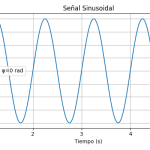Optical wireless communication, also known as free-space optical communication (FSO) or optical wireless networking (OWC), is a communication technology that uses light to transmit data through the air, typically in the form of laser or LED (light-emitting diode) beams. It’s a wireless communication technology that provides high bandwidth and low latency data transmission, making it suitable for various applications, including point-to-point links, last-mile connectivity, and even satellite communications.
Here are the key components and principles of optical wireless communication:
- Transmitters: Optical wireless communication systems use lasers or LEDs to generate light signals. Lasers provide high power and narrow beams, suitable for long-range communication, while LEDs are often used for short-range applications.
- Optical Modulation: Information is encoded onto the optical signal by modulating its intensity, frequency, or phase. Common modulation techniques include amplitude modulation (AM), frequency modulation (FM), and phase modulation (PM).
- Transmission Medium: Unlike traditional wired communication, which uses copper or optical fibers, optical wireless communication transmits data through the air. This requires line-of-sight (LOS) between the transmitter and receiver. Atmospheric conditions, such as fog, rain, and turbulence, can affect the quality of the optical link.
- Receivers: Receivers in optical wireless communication systems are equipped with photodetectors (e.g., photodiodes) that capture the incoming optical signals and convert them back into electrical signals. Signal processing techniques are applied to demodulate and decode the data.
- Point-to-Point and Point-to-Multipoint Links: Optical wireless communication can be used for both point-to-point links (connecting two specific locations) and point-to-multipoint links (connecting one location to multiple destinations). Point-to-point links are often used for backhaul connections between buildings or across geographical distances.
- Applications: Optical wireless communication is used in various applications, including:
- Last-Mile Connectivity: FSO can provide high-speed internet access in urban areas where laying fiber-optic cables is challenging or expensive.
- Disaster Recovery: It can establish temporary communication links during natural disasters when traditional infrastructure is damaged.
- Satellite Communications: Optical links can be used for space-based communication, enabling high-speed data transfer between satellites and ground stations.
- Secure Communication: FSO is difficult to intercept, making it suitable for secure communication in military and sensitive applications.
- Astronomy and Space Communication: Optical communication is used to transmit data from space missions, such as rovers and satellites, back to Earth.
- Challenges: Optical wireless communication faces challenges such as weather-dependent signal degradation (e.g., due to fog or rain), limited transmission distance in adverse conditions, and susceptibility to physical obstacles that can block the line of sight.
- Advantages: Key advantages of optical wireless communication include high data rates, low latency, and immunity to electromagnetic interference, making it a valuable alternative or complement to traditional wired and wireless communication technologies.
Overall, optical wireless communication is a promising technology with various practical applications, particularly in scenarios where high-speed, low-latency, and secure communication is required, and where traditional wired or wireless solutions may not be feasible or efficient.


